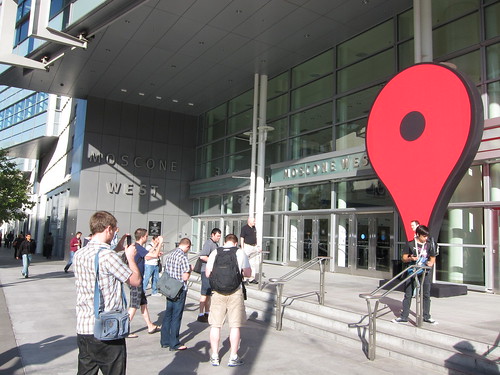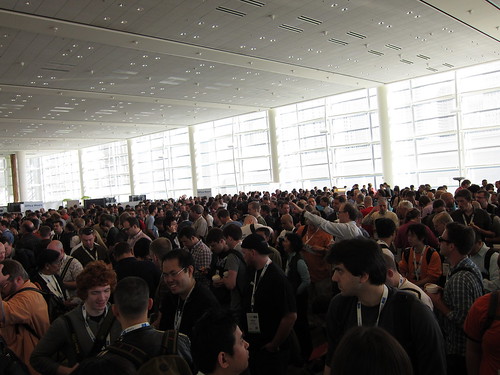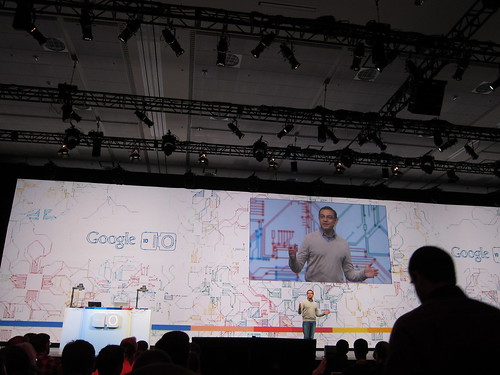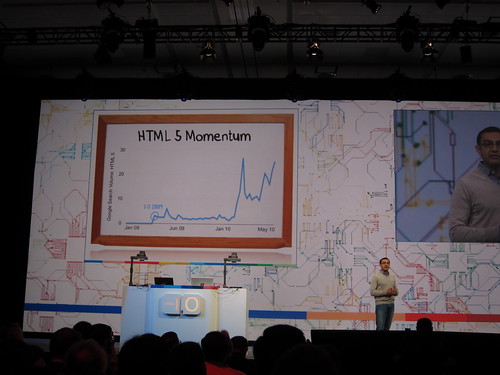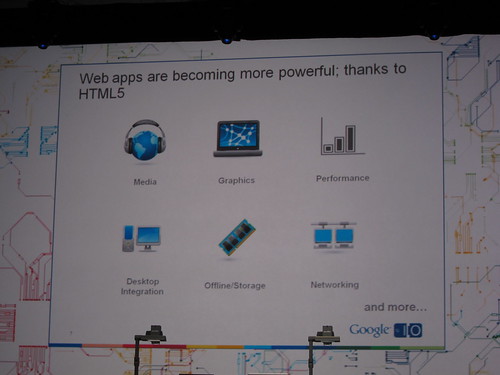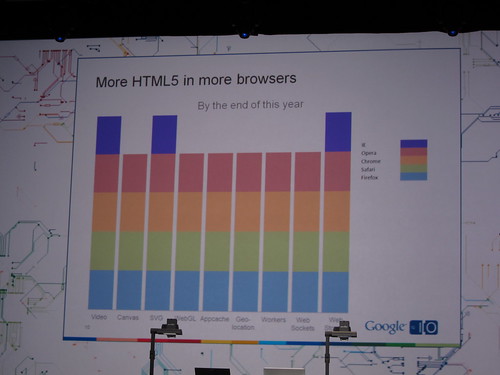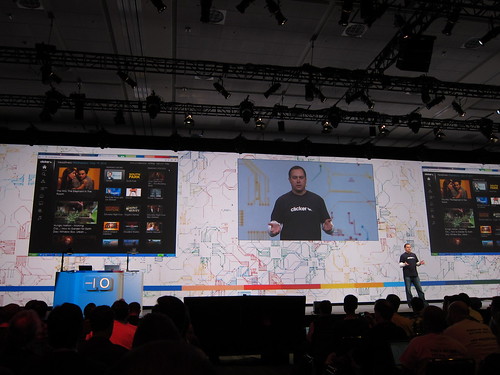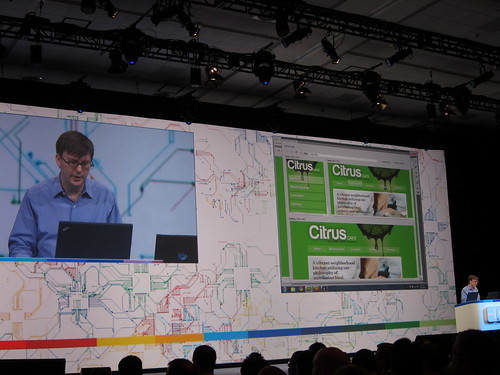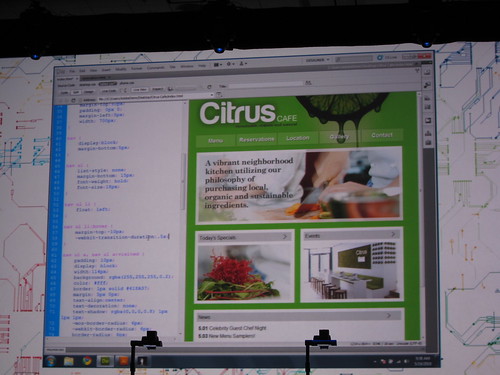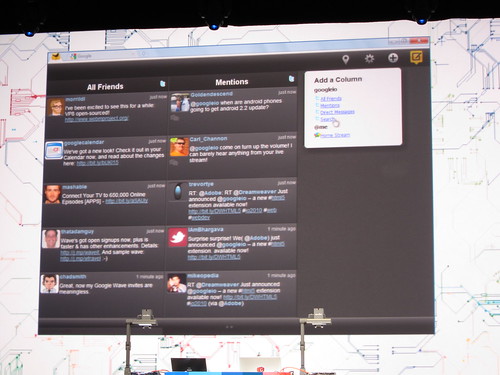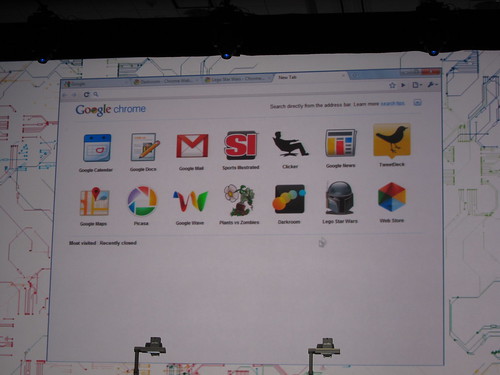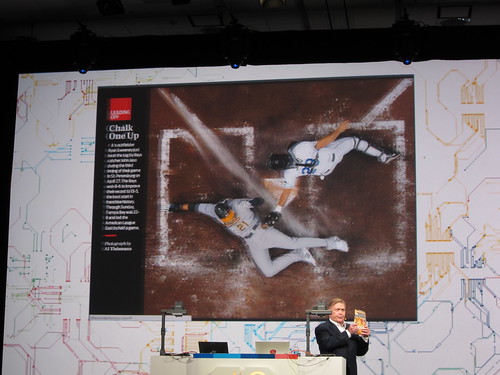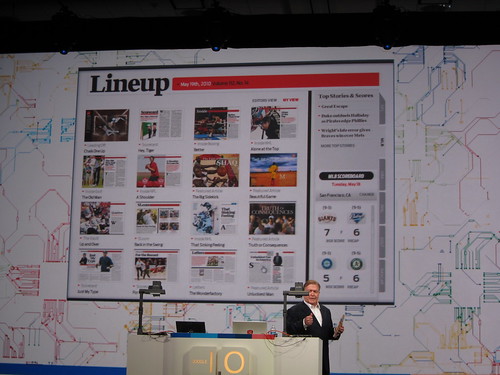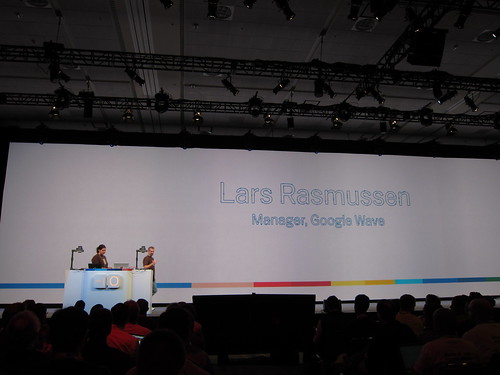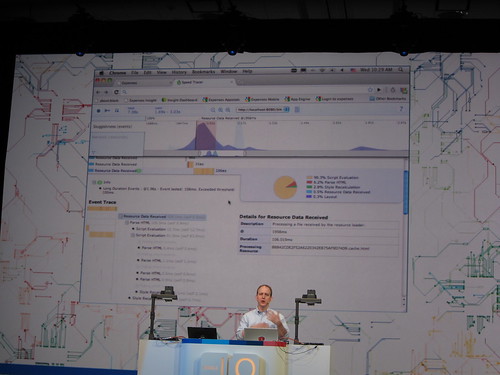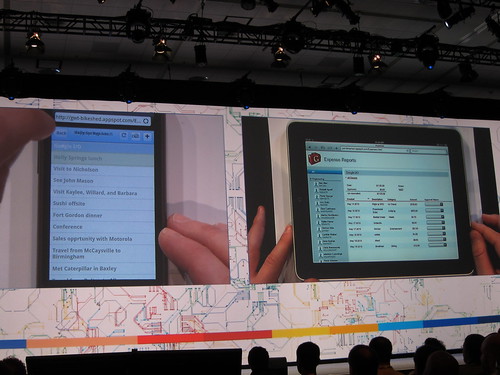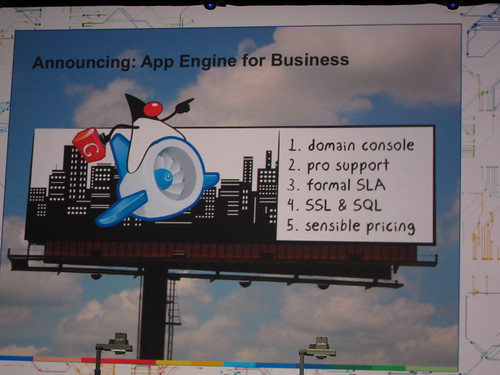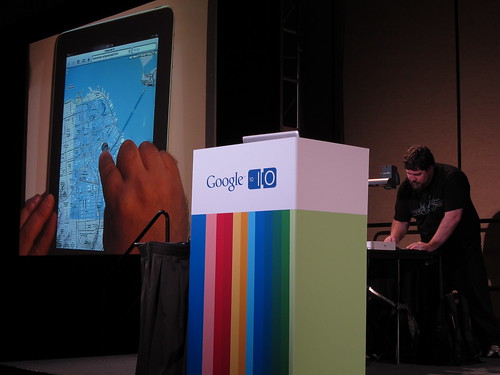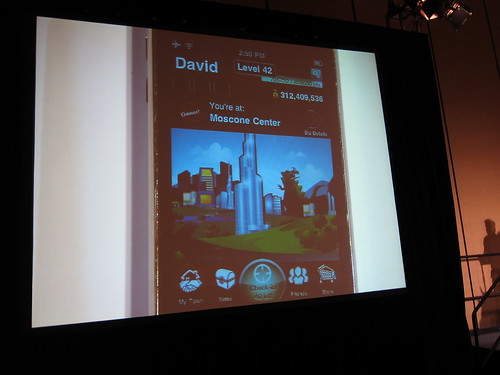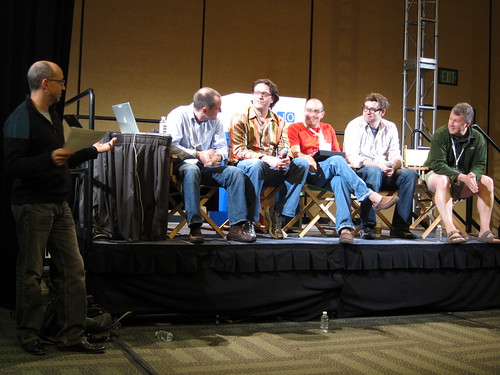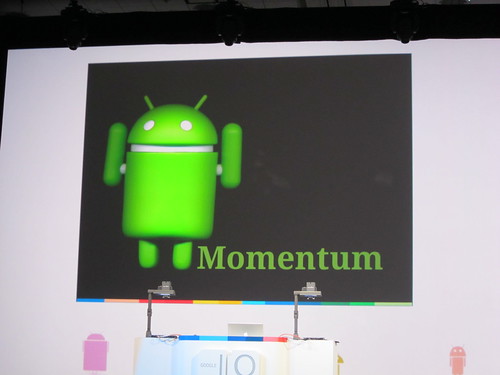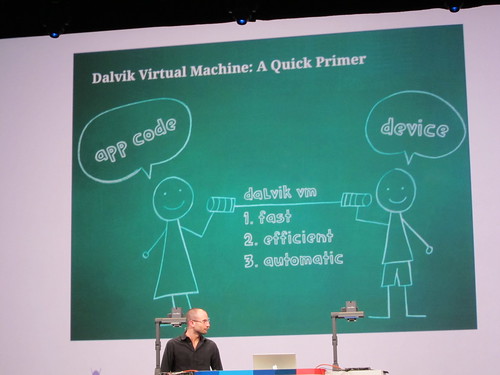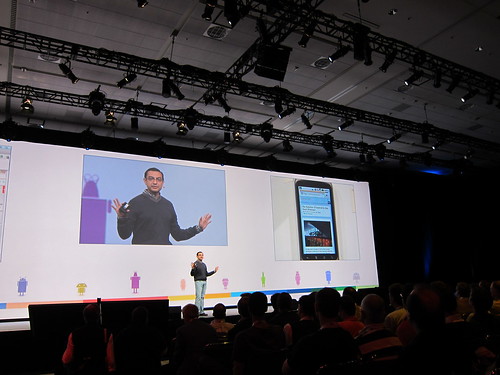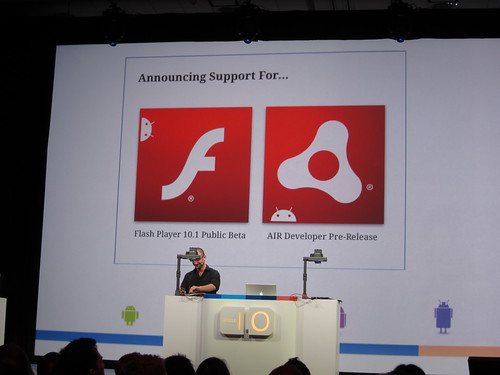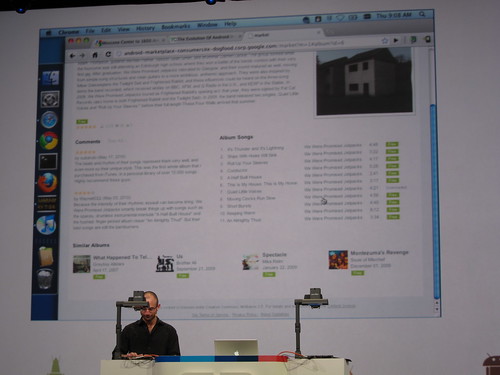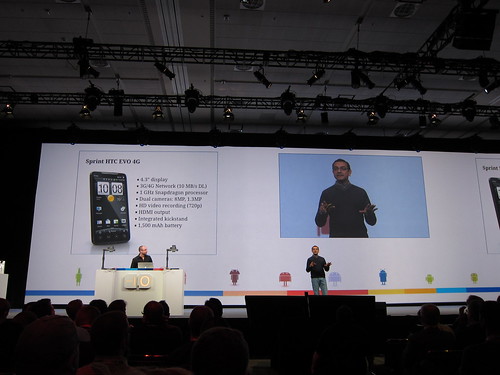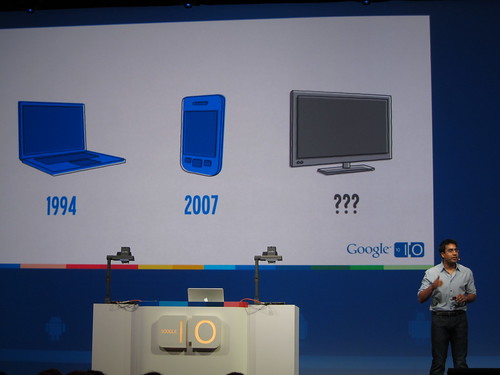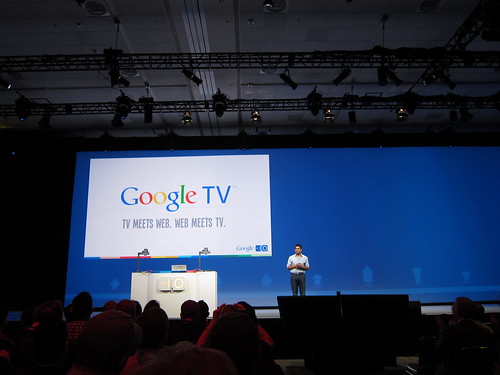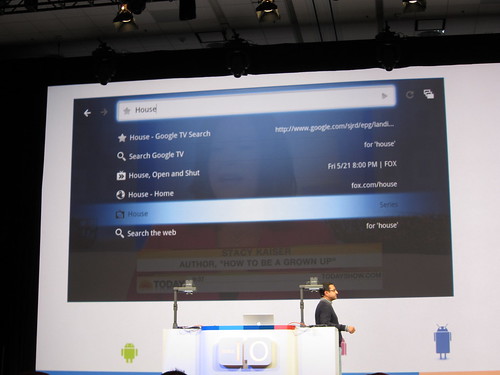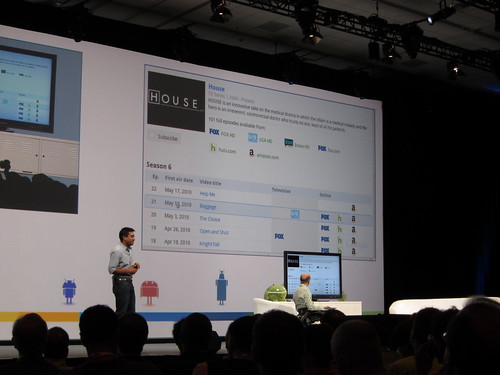Live: Google I/O 2010

Warning: this is a live blog. Information is processed in real-time and is not always edited to perfection.
Google I/O, the GOOG's annual developer conference, is one of my favorite to attend.
Attendees got a free Android device for signing up, and every is pumped to be here. This is not your normal San Francisco crowd, it's mostly international.
8:23 a.m. Waiting to get in to the keynote. I have never seen it this crowded.
Google is streaming the keynote here: https://www.youtube.com/GoogleDevelopers
9:02 a.m. Vic Gundotra, VP of Engineering at Google, said 5,000 people are at this year's Google I/O. In three years, it's the largest and fastest-selling-out I/O.
He takes credit for the widespread adoption of HTML 5. If you look closely at this graph, you can see when Apple and Microsoft adopted it.
Google's greatest challenge is speed though: they are constantly making it faster.
Next up is Sundar Pachai, who has even more to say about HTML 5.
Pachai recognized that the Internet has outpaced TV, magazines, radio, and books 100 fold.
Most desktop applications that are popular haven't been revolutionized on the web since 2004; this is when Ajax and the Web 2.0 revolution happened. The desktop application died. The web changed from documents to applications, and developers started reaching users by writing web applications.
Given that, we need to make sure web applications can do everything that desktop applications can do.
The hardest thing to get right is making sure browsers can keep up with web developers.
Another interesting thing is mobile: everyone here has a smart phone. HTML 5-enabled mobile browsers are outpacing other phone browsers.
Simple things like dragging files from your desktop into Gmail is working already. Mugtug.com allows you to edit photos on the web browser offline. Clicker.tv has a sweet HTML 5-enabled website.
Pachai says that video is one of Google's final frontiers, including their interest in VP8, one of the web's best codecs. It's the best for real-time streaming.
Google is opensourcing VP8 and renaming it WebM.
Folks from Mozilla and Opera both got up on stage and pledged their support for WebM, a truly open codec.
For WebM to succeed, we need good hardware. Google is working with AMD, Intel, and tons more partners.
Surprisingly, Adobe has been doing a lot of work with HTML 5 as well.
The latest version of Dreamweaver has something called "Multi-Screen Preview", which lets you see different screen sizes that your website will look in. You can even attach separate stylesheets with each view.
The design/code view has improved a lot, and lets you switch between versions of your site with ease.
Kevin Lynch, CTO of Adobe, showed some really cool uses of HTML with SVG, CSS, Javascript, and animations. Even though people always give Flash a hard time for not conforming to HTML standards, all of Adobe's products are up to date with the rest of the web.
Lynch claims that Adobe will push out VP8/WebM to a billion people in a year's time.
9:44 a.m. Pachai is back on stage, explaining that it's hard for users to find good web applications. There are many good chess games on the web, but there is no real good way to get ratings and reviews.
As developers, you need reach, monetization, and analytics around your app. Enter the Chrome Web Store.
You can play games, use apps, and find interesting things to do. It's kinda like a gallery of awesome HTML 5 web applications. The work really well in Chrome.
Here is how Tweetdeck looks:
Imagine a Google tablet, with this as the home page:
Sports Illustrated is a monster traditional brand that is taking advantage of Google's support for HTML 5.
Besides taking advantage of the amazing photography and video, they are building a social magazine experience.
They are creating new types of advertising. A camera ad: imagine a whole catalog of products that you can inspect in your web browser/tablet. You can test out lenses right on the website.
Time, Inc. is working with The Wonder Factory to build these beautiful web apps.
Chrome Web Store will have 40 partners at launch, and work perfectly on the Chrome OS browser.
10:02 a.m. Lars Rasmussen opens Google Wave up for everyone. It's now part of Google Apps. He says the best application of wave is for companies to do internal communication.
The Wave Robot API has been improved a lot. Robots no longer have to live on Google App Engine, they can live anywhere on the web. There is a new Wave Data API for lightweight clients.
Wave has a new client-services protocol so you can host it easily anywhere.
Jeff Glazer, another engineering VP, is up next to talk about how we can use the web to do better at work. He proudly wears an HTML 5 hockey jersey.
The VMWare guys are on stage now showing an open-source tool called Roo. They are building a expense report web application using GWT in less than 200 keystrokes.
Speed Racer is an x-ray machine for your browser's guts:
Using Google Web Toolkit, you can build interfaces that update each other in real time. Here is an Android updating an iPad:
Google announces App Engine for Business, with professional support.
1:45 p.m. Mano Marks from the Google Maps team shows us how easy it is to navigate on the iPad:
Sneak peek at a new augmented reality game using maps:
3:00 p.m. Sitting in on Technology, innovation, computer science, & more: A VC panel.
Dick Costollo from Twitter is moderating the panel of VCs who code: Albert Wenger, Chris Dixon, Dave McClure, Paul Graham, and Brad Feld.
Question: Would you invest in a startup with non-technical founders?
The general concensus is that yes, it's okay to have non-technical founders, but if you want to make a good product, you need a group of good hackers nearby.
Sometimes "technology" innovations are not as important as business or marketing innovations.
Question: Do you feel that web apps will replace native apps and why?
Answer: I hope so, because I'm very afraid of a world where everyone is Steve Jobs' slaves.
If you go forward 20 years, the way we interact with computing devices will be completely different. In 40 years, hopefully the machines will be friendly to us. As an investor, I want to be investing in companies that are radically changing the way we interact with computers.
And you better be learning Mandarin Chinese.
7:20 p.m. It's party time. Check out some photos from the I/O after hours:
Thursday Keynotes
VP of Google Engineering Vic Gundotra started off the Thursday keynote with an ode to Android. They activate over 100,000 Android phones a day. In just 18 months, Google is first in total web and application usage over all other smartphones in the first quarter of 2010.
There are over 50,000 applications in the Android marketplace from 180,000 developers.
Today, Android 2.2 (Froyo) is being announced. It's build on speed: the Dalvik compiler has been upgraded with a "just-in-time" compiler to make it 2-5x faster.
Also announced is a Cloud-to-Device Messaging API. From Chrome, you can basically send driving directions or a web page link directly to a phone.
Another sweet thing Google announced is a Tethering and Portable Hotspots. They demoed an Android's cell connection powering the network of a disconnected iPad. Gundotra insisted on tethering: no need to have more than one data bill.
Android now has the V8 Javascript engine. It makes the phone operate 2-3x faster. Froyo has the world's fastest mobile browser.
New incredible support for voice search and foreign language translation.
Android 2.2 now supports Flash 10.1. "On the Internet... people use Flash," laughed Gundotra.
The Android Marketplace is getting some improvements as well. Besides an "Update All" button for upgrades, there will be a new Android Marketplace on the web.
You can download the app from a website, and it will just send it to your phone. Sounds revolutionary, but this is something that should have been in the Marketplace on Day 1.
Oh, and don't forget the iTunes killer. Now you can even stream iTunes music to your Android device.
Google is working on new ways to display mobile ads. The ads are unintrusive, and play rich media. If you are familiar with Android, you basically "slide" them down if you want to interact with them.
As a gift from The GOOG, everyone at Google I/O is getting the new Sprint EVO phone.
9:21 p.m. Rishi Chandra introduces Google TV, which will "redefine the future of television."
The average American spends 5 hours a day in front of a television.
It sucks to squeeze the whole family in front of a computer screen.
But combining Web and TV is not an easy task. It's about making them both better. Spend less time finding and more time watching. Control and personalize what you watch and when you watch it. Make existing TV content much more interesting. It's gonna make your TV much more than a TV.
Besides being able to search for shows that are playing now, you can search for results on the web, and subscribe to shows right from the quick search box.
It connects well with Amazon, Hulu, and other streaming video sites.
This reminds me of Boxee:
Obviously, YouTube is integrated.
If I want to search for "2010 State of the Union", you can get to the video very quickly. It's not about channels and shows anymore. You are in control of the content on your TV now.
Android apps work on Google TV. Mobile apps that are coded correctly look and work perfectly (for the most part).
Companies like the NBA are building apps that look and work well on Google TV.
Google's mobile podcast app Listen now works on Google TV. You can stream content from podcasts, etc.
This blog post isn't complete. Please keep refreshing to see updates in real time.
